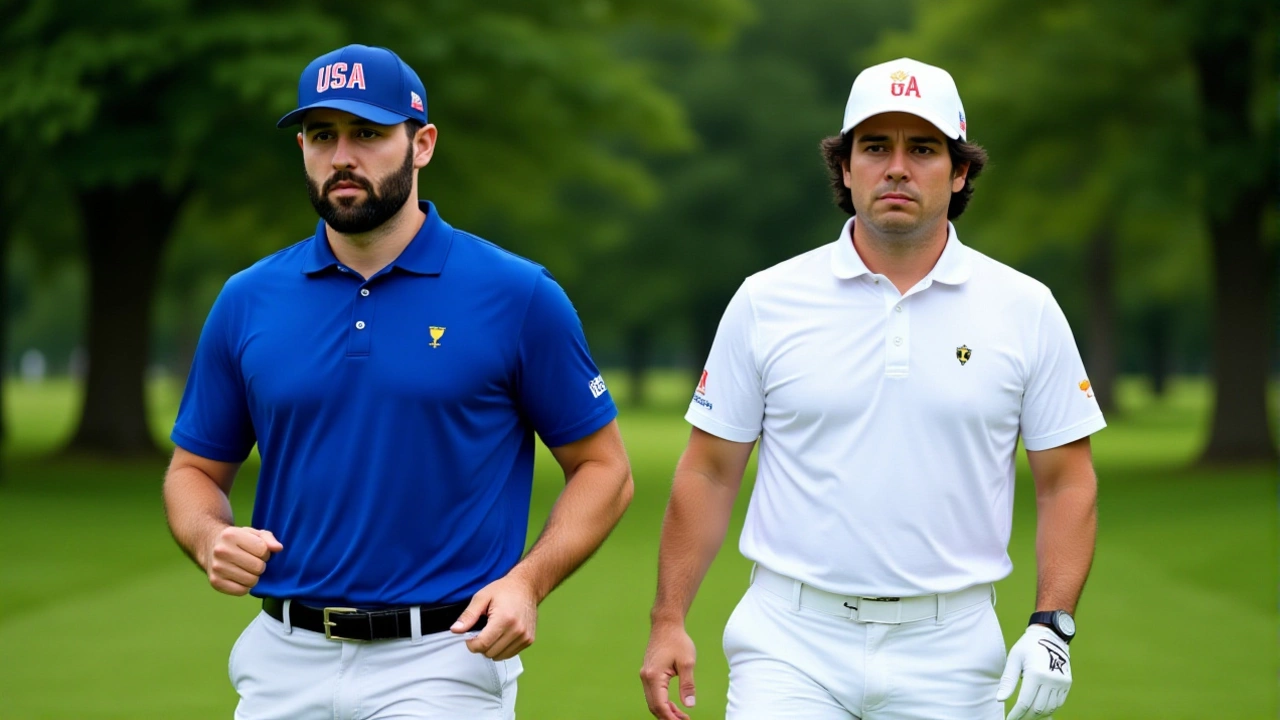Presidents Cup – What It Is and Why It Matters
When talking about the Presidents Cup, a high‑profile team competition that pits elite athletes against each other under a unique format, you’re looking at a showcase of strategy, pressure handling and team chemistry. Also known as the Presidents' Trophy Event, the Cup blends individual brilliance with collective tactics. It requires players to master both personal skill and teamwork, while organizers must keep the event fair and legally sound.
The Cup doesn’t exist in a vacuum; it lives alongside other intense sports spectacles. For example, Motorsport, racing series like Formula 1, NASCAR and IndyCar that push engineering and driver skill to the limit shares the same need for clear rules and strict oversight. Both arenas depend on precise regulations to avoid disputes and ensure safety. This parallel explains why Legal, the body of laws and case precedents that govern sport events is a cornerstone of any successful competition. When a rule is ambiguous, courts or arbitration panels step in, shaping how future Cups are run.
Key Topics Covered
Understanding the Presidents Cup starts with three core entities: the competition itself, the skill set it demands, and the legal framework that keeps it orderly. First, the competition element brings together multiple disciplines—golf, rugby, or other team sports—each with its own scoring system. That variety means the event must balance fairness across very different games, which is why organizers develop a unified rulebook. Second, the skill component isn’t just about raw talent; it includes mental resilience, strategic planning and the ability to adapt under pressure. Research from sports psychologists shows that athletes who train for high‑stakes events often focus on scenario planning, a habit that shows up in Cup preparation. Third, the legal side covers everything from contract negotiations with players to liability insurance for spectators. Recent cases in the UK illustrate how failure to address safety protocols can lead to costly lawsuits, prompting many event planners to adopt stricter risk‑management policies.
These three pillars connect in clear ways: the Presidents Cup encompasses a multi‑sport competition, requires advanced skill development, and relies on solid legal structures. In practice, this means a team might hire a sports lawyer to review player agreements, while a coach works with a mental‑training specialist to boost performance. The synergy between skill and law mirrors what we see in motorsport, where engineers must understand both vehicle dynamics and the technical regulations that govern them. This cross‑industry insight helps event managers avoid pitfalls and keep the Cup exciting for fans.
From a legal perspective, the Presidents Cup illustrates how sports law adapts to new formats. For instance, when the Cup introduced a mixed‑gender team format, regulators had to reinterpret existing anti‑discrimination statutes and adjust prize‑distribution rules. The outcome was a set of guidelines that other tournaments now cite as a reference point. Likewise, the Cup’s broadcasting agreements often involve complex licensing deals that must respect both national and international copyright laws. Understanding these nuances can save organizers from costly breaches and ensure that fans get uninterrupted access to live coverage.
Skill development for Cup participants goes beyond physical training. Many teams adopt data‑driven approaches, using performance analytics to fine‑tune tactics. In motorsport, telemetry feeds help drivers and engineers spot inefficiencies; the same principle applies to the Cup, where teams track shot accuracy, sprint times or tackle success rates. By turning raw data into actionable insights, coaches create targeted practice sessions that address individual weaknesses while enhancing overall team cohesion.
Finally, the competition’s cultural impact can’t be ignored. The Presidents Cup often serves as a platform for charitable initiatives, community outreach and national pride. These off‑field elements influence public perception and, indirectly, the legal landscape—governments may grant special permits or tax incentives for events that demonstrate strong social benefit. This feedback loop reinforces the importance of aligning the Cup’s objectives with broader societal goals.
Below you’ll find a curated selection of articles that dive deeper into each of these areas—from how legal experts protect athletes’ rights, to the technical skills that separate winners from the pack, and the ways motorsport’s regulatory lessons inform the Cup’s governance. Whether you’re a fan, a player, or an event organizer, the insights here will give you a clearer picture of what makes the Presidents Cup tick and how you can stay ahead of the curve.
The U.S. reclaimed the lead at the 2024 Presidents Cup, going 11‑7 after winning both sessions on Saturday at Royal Montreal Golf Club, setting up a tense Sunday singles showdown.
